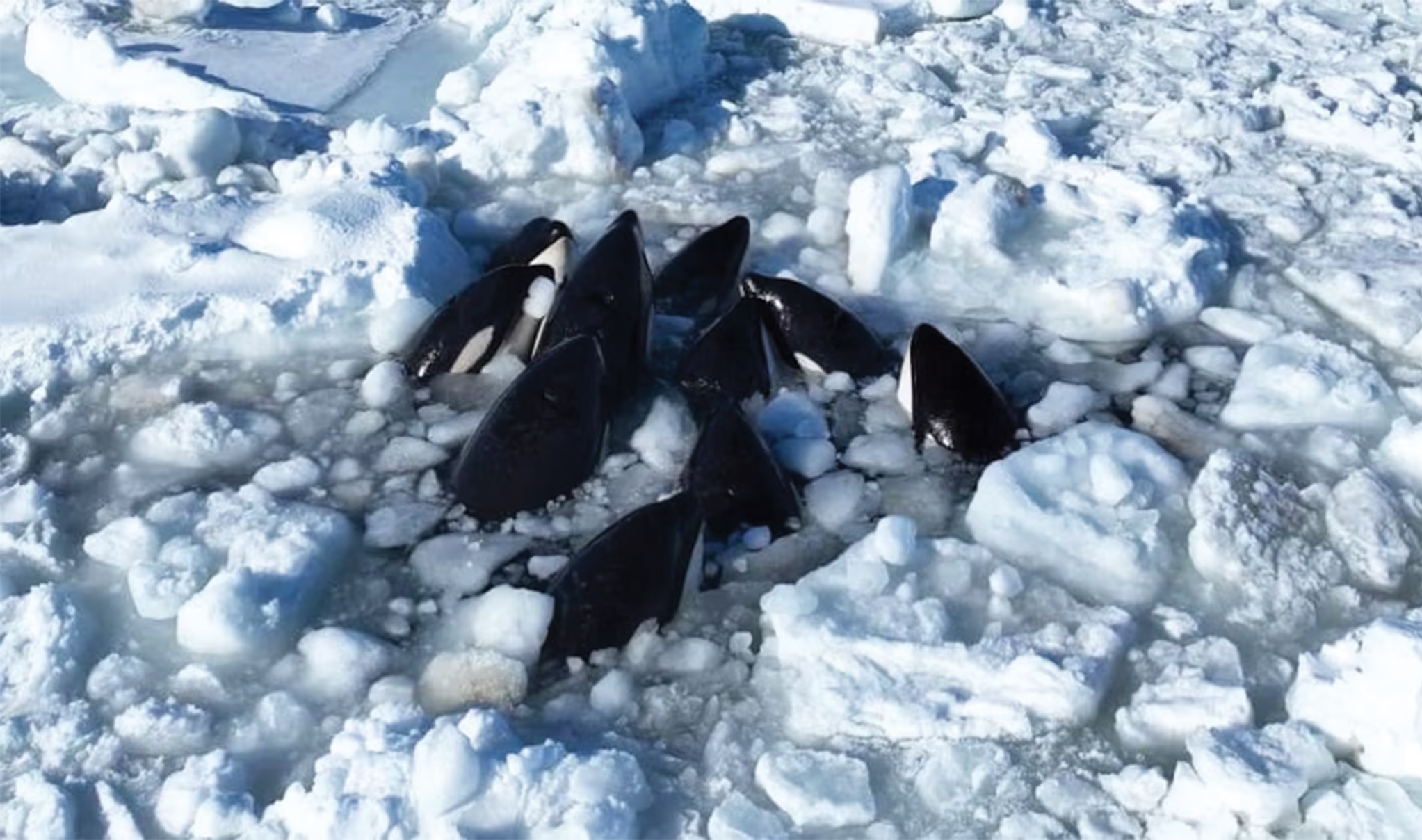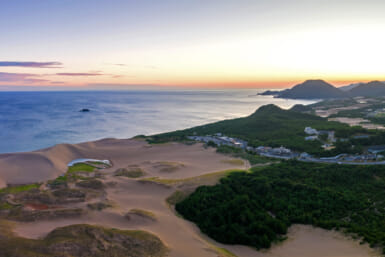Update: According to officials, more than 10 killer whales trapped by drift sea ice in Northern Japan may have been escaped as they no longer appear to be there. “As the gap in the drift ice started to open, it’s likely they escaped,” said an official from Rausu.
They were first seen in a small gap in the water’s surface just off the coast of Rausu in the east of Hokkaido. Footage aired by national broadcaster NHK showed a group of orcas closely packed together. During the short, distressing video, they can be seen sticking their heads out of the water gasping for air. Marine life expert Seiichiro Tsuchiya shot the scene using a drone. He was conducting research into the local sea lion population when he noticed them.
No Rescue Operation
“I saw about 13 killer whales with their heads sticking out of a hole in the ice,” he said. “They seemed to be struggling to breathe, and it looked like they included three or four calves.” The orcas were first spotted by local fishermen, who alerted the coast guard on Tuesday morning. Sadly, a rescue operation couldn’t be launched due to the thick ice. “We have no choice but to wait for the ice to break up and for them to escape that way,” an official from Rausu told NHK. Due to the continuing low temperatures in the region, the drift ice is likely to expand.
Killer Whales Cannot Breathe Underwater
While killer whales are fully aquatic mammals that spend their entire lives underwater, they don’t have gills and, therefore, cannot breathe underwater. They must make a conscious effort to take a breath from the surface of the water every five to 10 minutes when their oxygen depletes. Their lungs are very powerful, but like humans, they will drown when they run out of oxygen. In February 2005, nine orcas reportedly died after a similar situation occurred in the same area off the coast of Rausu.









